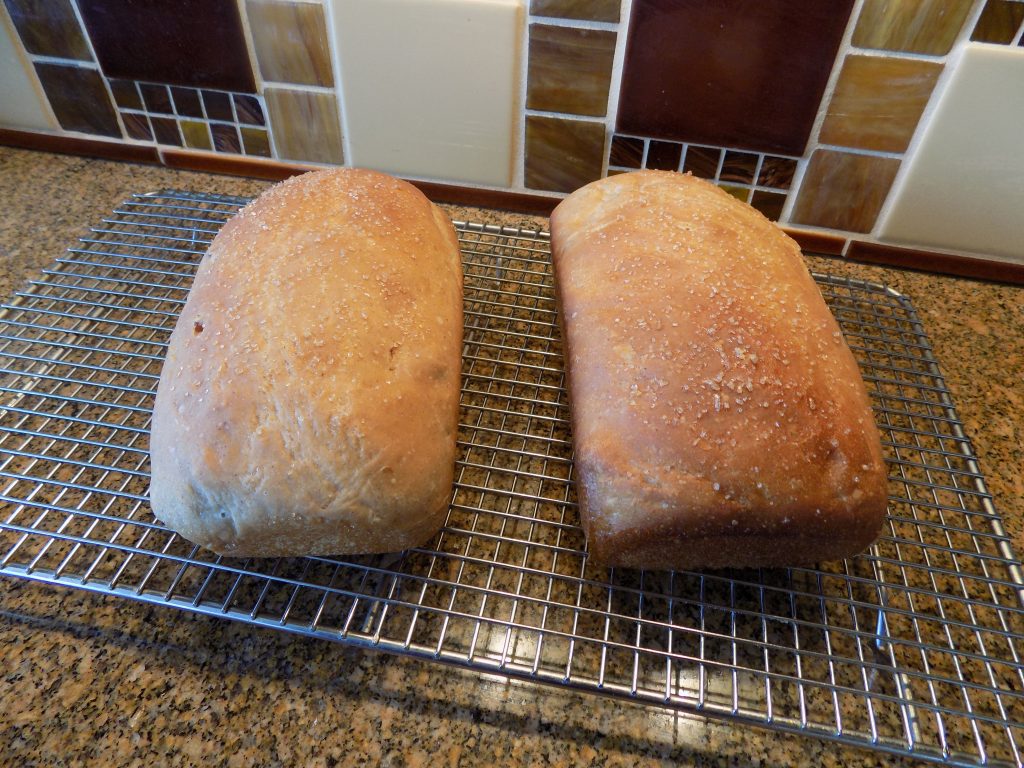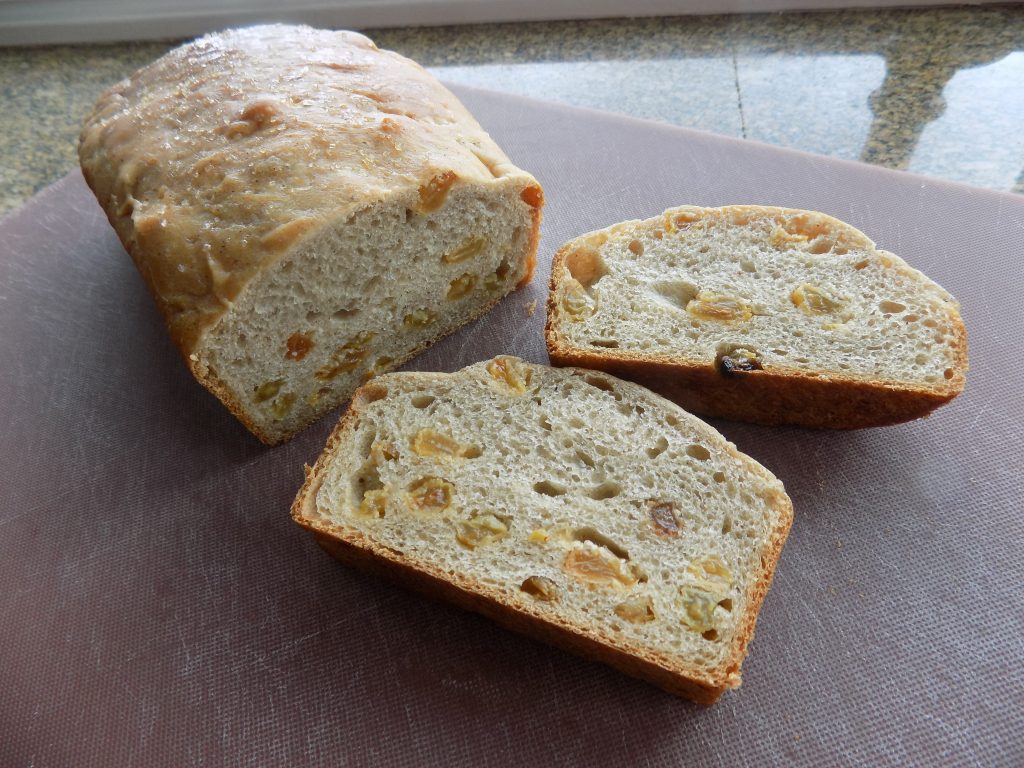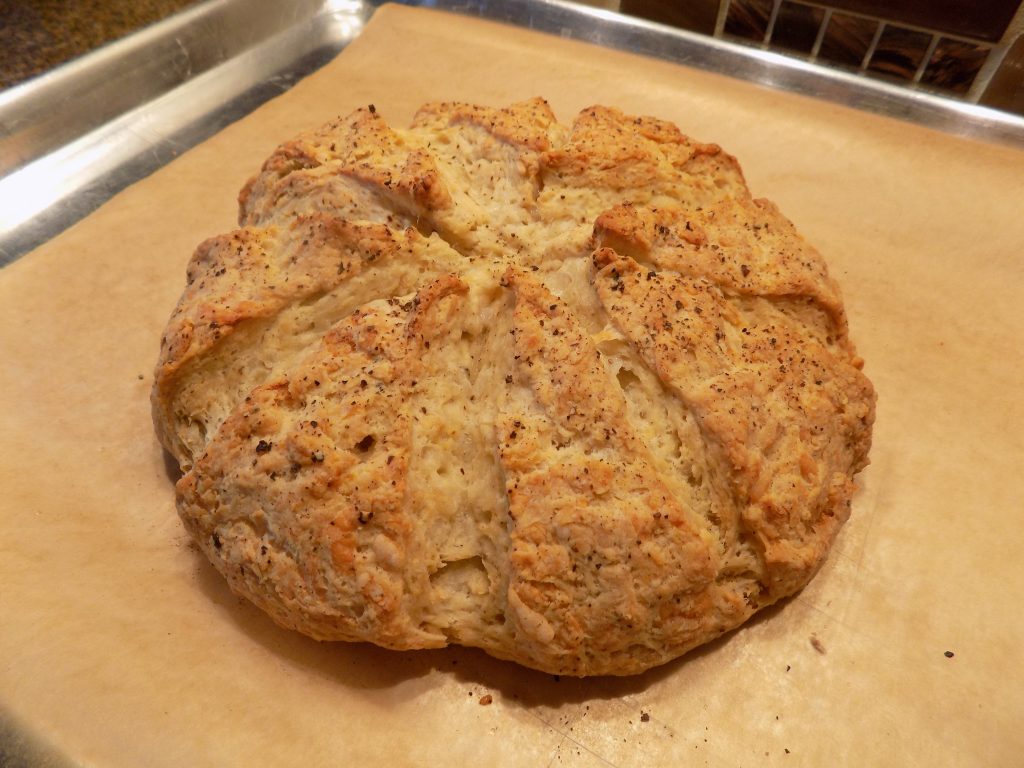

This is the perfect sandwich bread to bake while everyone is on lockdown. Every ingredient can be substituted.
When I built this bread yesterday, I used the first ingredient listed, but I could have just as easily and successfully used the alternative. Which is truly a good deal when all of us are trying to make do with what we have on hand. No one wants to make an unnecessary trip to the grocery store. This is not the time for strict adherence to recipes. This is the time to make do with what we have and let our creativity shine! And bread is a perfect way to express creativity.
Unlike cake, for example, which is based on strict adherence to the listed ingredients, you can build a loaf of yeast bread using just about any ingredients you choose to incorporate. As long as you have yeast, liquid, flour, and salt, you can throw just about any other ingredient into the mix. And this bread (from the ambitiouskitchen.com site) is a good example of using interesting ingredients. (The alternative ingredients are all my idea. But trust me. They will all work beautifully. I’ve made a lot of bread in the last 50 years, and have used every one of these alternative ingredients.)
And boy howdy, does this healthy, soft bread make terrific toast! And tomorrow morning, I’m going to make French toast. And serve it with warm berry syrup. I’d invite you over to dine with us, but, well, I’m too stingy to share! Not really, it’s just this social distancing thing that’s going around right now. Absolutely necessary, but not very much fun for anyone. Speaking of fun, I thought you might enjoy a bit of humor today before you start baking this bread. As always, peace, love, and a good laugh to all.
Half of us are going to come out of this quarantine as amazing cooks. The other half will come out with a drinking problem.
I used to spin that toilet paper like I was on Wheel of Fortune. Now I turn it like I’m cracking a safe.
I need to practice social-distancing from the refrigerator.
Every few days try your jeans on just to make sure they fit. Pajamas will have you believe all is well in the kingdom.
Homeschooling is going well. 2 students suspended for fighting and 1 teacher fired for drinking on the job.
I don’t think anyone expected that when we changed the clocks we’d go from Standard Time to the Twilight Zone
This morning I saw a neighbor talking to her cat. It was obvious she thought her cat understood her. I came into my house, told my dog. We laughed a lot.
So, after this quarantine…..will the producers of My 600 Pound Life just find me or do I find them?
Quarantine Day 5: Went to this restaurant called THE KITCHEN. You have to gather all the ingredients and make your own meal. I have no clue how this place is still in business.
My body has absorbed so much soap and disinfectant lately that when I pee it cleans the toilet.
Day 5 of Homeschooling: One of these little monsters called in a bomb threat.
I’m so excited — it’s time to take out the garbage. What should I wear?
Classified Ad: Single man with toilet paper seeks woman with hand sanitizer for good clean fun.
Day 6 of Homeschooling: My child just said “I hope I don’t have the same teacher next year”…. I’m offended.
1¼ c. slightly warm water*
1/3 c. + 2 T. powdered milk*
1 scant T. or 1 pkg. active dry yeast
1 T. honey or maple syrup
1/3 c. old-fashioned rolled oats, or whatever kind of uncooked oats you might happen to have on hand
3 T. unsalted butter, melted (but salted butter is just fine)
1 tsp. kosher salt or regular table salt
2 T. flaxseed meal, chia seeds, or hemp seeds or none at all
¾ c. whole wheat pastry flour or regular whole wheat flour
2 c. bread flour or regular all-purpose flour, plus more if needed
4 T. mixed seeds – whatever you have on hand (I used 2 T. raw sunflower seeds, 1 T. sesame seeds, and 1 T. poppy seeds)
olive or veggie oil, for coating
Mix the water and powdered milk in the bowl of your stand mixer. Stir in the yeast, honey, and oats. Let the mixture sit for 5 minutes.
Add the melted butter, salt, flaxseed meal, and whole wheat pastry flour. Mix together with your dough hook. Add the bread flour. When the dough begins to form, add the mixed seeds. Knead the dough for about 4 minutes. (The dough should be fairly soft. There should still be a bit sticking to the bottom of the bowl.)
Once done kneading, pour a bit of olive oil over the dough, and using your hands, roll the dough into a ball making sure the entire surface has a thin coating of oil. Loosely cover with plastic wrap and allow to rise for about 60-90 minutes, or until doubled in size. This may take more or less time depending on the weather or temperature in your home. When you feel the dough is ready, make a small indentation with your finger near the edge of the bowl. If the indentation remains, the dough is ready for the next step.
Lightly grease an 8×4-inch loaf pan. After dough has risen, punch it down and form into a loaf shape. Place in prepared pan, tucking the ends underneath. Pat the dough out until it fits into the corners of the pan and is flat on top.
Cover with plastic wrap and allow it to rise again for 30-60 minutes or until the loaf has risen an inch above the rim of the pan. This may take more or less time depending on how warm it is in your home. Watch carefully because you don’t want the dough to rise too much.
Once the dough has risen to about the top of the pan, pre-heat your oven to 350 degrees while the dough finishes rising. Bake for 30-40 minutes or until loaf is slightly golden brown on top. The internal temperature should be about 195 degrees.
Remove from oven and transfer to a wire rack to cool. If the bread resists coming out of the pan, leave it alone for about 10 minutes, then try again. Allow the bread to cool for at least 2 hours before slicing. Bread should be wrapped tightly and stored at room temperature.
*or 1¼ cup no fat, low fat, or whole milk, scalded – to scald milk, heat it in a small saucepan over low heat until milk is warm (about 115 degrees). Before pouring it into the bowl of your mixer, the scalded milk should be slightly warm to the touch.
















